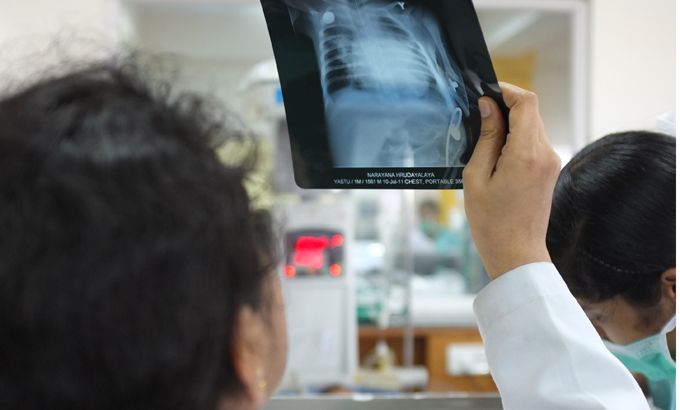
Indian Hospital: Episode 1
We go inside a hospital with a difference, where making a profit and providing free medical care goes hand-in-hand.
| This unique observational documentary series shines a light on Indian society as it is rarely seen. In six one-hour programmes it illuminates the complexities and dilemmas of modern India through the extraordinarily varied lives of patients and medical staff working at the Narayana Hrudayalaya Hospital Complex in Bangalore. |
A series by Paul Roy.
India has the world’s second-largest population but more than 40 per cent of the people live below the poverty line and there is no government-funded welfare system or safety net.
Keep reading
list of 4 itemsWoman, seeking loan, wheels corpse into Brazilian bank
UK set to ban tobacco sales for a ‘smoke-free’ generation. Will it work?
Poland lawmakers take steps towards liberalising abortion laws
So with only $4 per person spent on public healthcare each year, falling sick in India can be a death sentence.
Narayana Hrudayalaya, meaning ‘Temple of the Heart’, is a hospital with a difference that is determined to make a difference. Here, making a profit and offering free medical care go hand-in-hand.
This hospital is the brainchild of Dr Devi Shetty, one of the world’s top cardiac surgeons.
And 10 years on from its founding, it has become a hugely successful and profitable business. But this is not what drives Shetty. His goal is to provide high-end affordable healthcare to rich and poor alike.
For many patients, 58-year-old Shetty is as near to a God as a mortal can be.
“The essence of life is helping people,” he says. “We are in a profession where people come, [and] they are not coming to buy a car or a house or a new suit. They are coming here to save their life. And when they come and tell us that they have no money we know if we refuse they are going to die. So if a hospital is not able to help people who come to its doorstep, we believe they should not be doing that job.”
The rapid growth and success of the Narayana health city is unparalleled in India. And the pioneering steps taken by Shetty and his team are offering lessons to the global healthcare industry.
Shetty is beginning to overcome one of medicine’s greatest challenges: offering high-end hospital services to the masses while still turning in an annual profit of nine per cent.
“We decided to adopt all the business principles of Walmart or Henry Ford – the one thing in common is the economy of scale,” Shetty explains.
At the Narayana, approximately 40 per cent of patients pay a reasonable price for their treatment, a small percentage – those who “want the frills of executive rooms” – pay a premium, a majority pays less than the market rate and 10 to 20 per cent pay virtually nothing. For the latter category, the hospital’s charitable wing raises money to help compensate for the material costs of their treatment.
In any other hospital, those who could not afford to pay their medical bills would simply be sent away until they came up with the cash, but at the Narayana the hospital’s charity wing helps them to find the money.
While the charismatic Shetty and his ideals are a draw card, it is the fact that he can offer the surgery cheaper than anyone else that is the main attraction.
In the first episode of Indian Hospital, we follow the story of Akbar and Qurr – a couple who have gone from one state hospital to another trying to save the life of their nine-month-old first-born child, Hatersham.
It is only during their first visit to Narayana Hrudayalaya Hospital that they are told Hatersham needs a liver transplant – a very risky procedure.
“My relatives ask us not to take the risk – and I have a chance to have another,” says Hatersham’s mother Qurr. “But how can we leave him in pain? He is my child.”
For Akbar, Qurr and baby Hatersham this is just the first stage of what will turn out to be a very long journey.